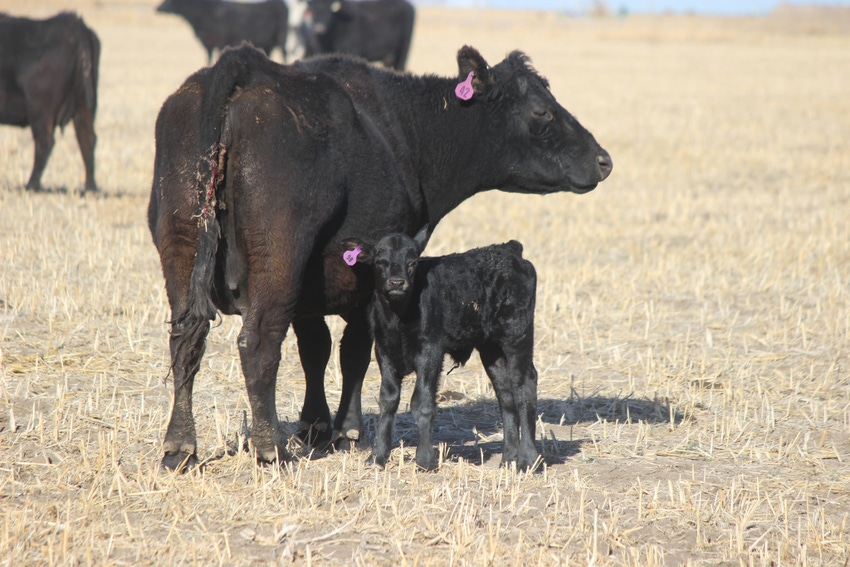Kansas State beef specialist shares tips for managing cow herds after rough winter.
March 25, 2019

Cattle producers are coming off what Kansas State University beef specialist Justin Waggoner, calls “one of the roughest winters” in recent memory, with the situation creating the need for extra attention this spring.
Waggoner, a beef systems specialist with Kansas State Research & Extension’s Southwest Area Extension office in Garden City, Kan., said abundant moisture early in the winter followed by bitter cold later was tough on cows and their calves.
“One of the reports we’re hearing a lot of people talk about is that our cows are a little thinner than [they] typically would be coming into calving,” Waggoner said. “A lot of that we can attribute to mud and cold temperatures; both of those increase the energy requirements of the cows.”
Waggoner noted that it takes extra energy for cows to get up from muddy pens to move to the feed bunk.
“Cold basically has the same effect,” he said. “When those temperatures drop below 18°F, we can see a pretty dramatic increase in energy requirements.
“If we didn’t make adjustments for that in our supplementation or feeding program throughout the winter, we tend to draw body condition reserves off the cow. That kind of explains the situation we are in. We are seeing some cows where their condition might be lacking right now,” he added.
Waggoner said the best strategy moving forward is to maintain whatever condition the cow is in right now rather than to let her slip further. He is working with producers to help them understand their herd’s energy requirements and what their current feeding strategy is providing.
“We need to pay attention to both the protein and the energy need,” Waggoner said. “A lot of times, we do a good job of covering our protein needs -- that’s really what most of our supplementation protocols are geared toward -- but we don’t always do a good job thinking about energy.”
He suggested providing high-quality hay, if available, as well as concentrated forms of protein and energy, such as corn blends, dried distillers grains or a commercial range cube.
“We need to be looking for supplements that are going to provide energy in the form of a high-fiber source,” Waggoner said. “If that isn’t necessarily an option, we can go to concentrates like corn, or even some byproducts can work well in that situation.”
He also encouraged producers to provide dry areas for cows, which may require using a box blade to clean up wet areas.
“We really start to see a performance impact in the feedlot when cattle don’t have a dry place to lie down,” Waggoner said. “The same thing is true of cow/calf-type systems. There are immense benefits to creating a dry place, either by spreading cattle out or giving them access to a new area where they have a dry place to get out of the mud.”
Source: Kansas State University, which is solely responsible for the information provided and is wholly owned by the source. Informa Business Media and all its subsidiaries are not responsible for any of the content contained in this information asset.
You May Also Like


.png?width=300&auto=webp&quality=80&disable=upscale)
